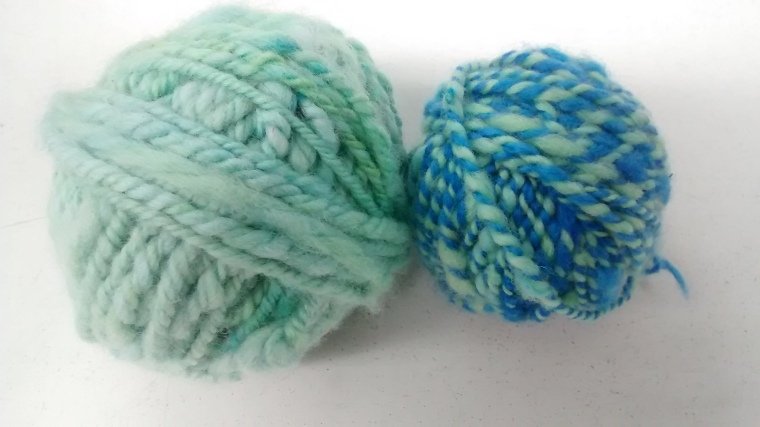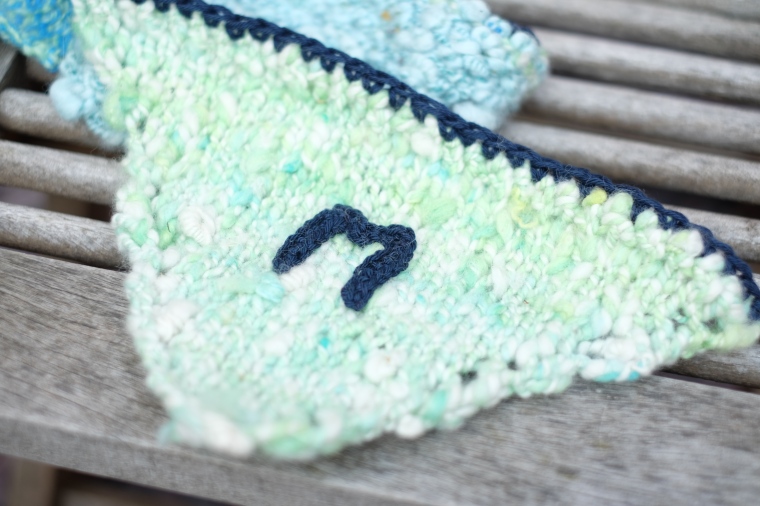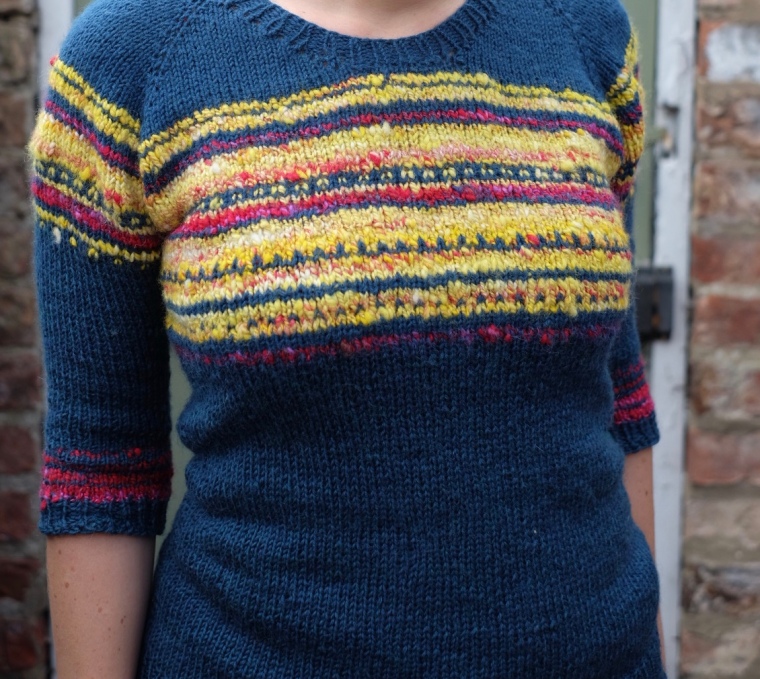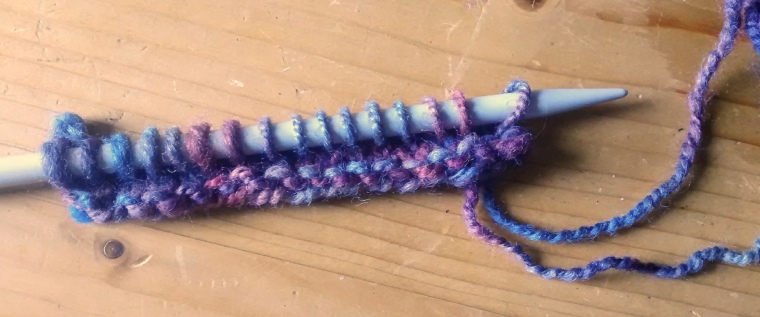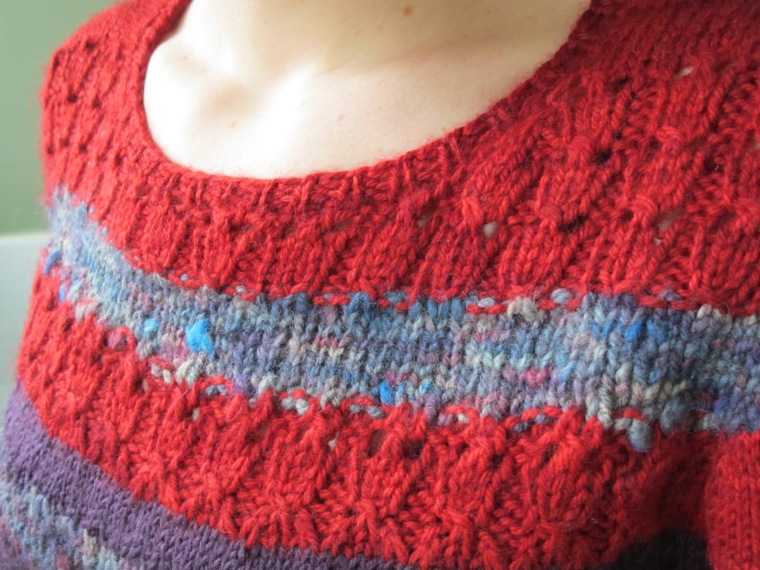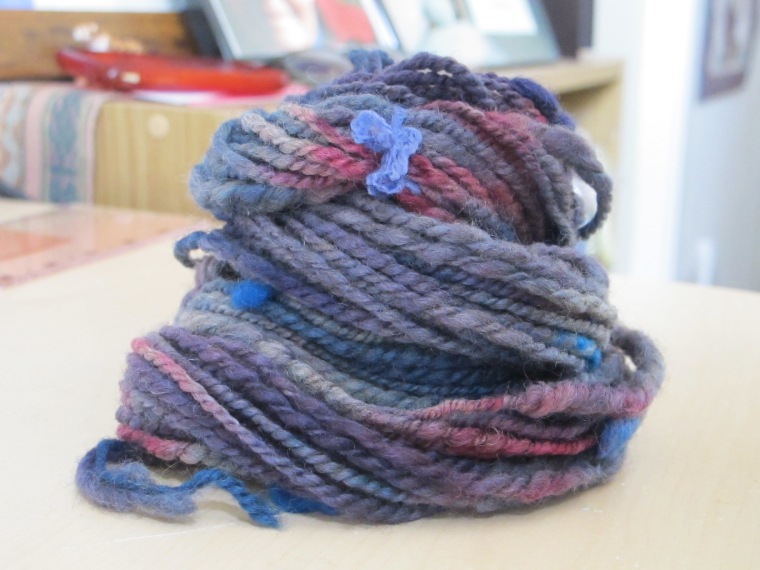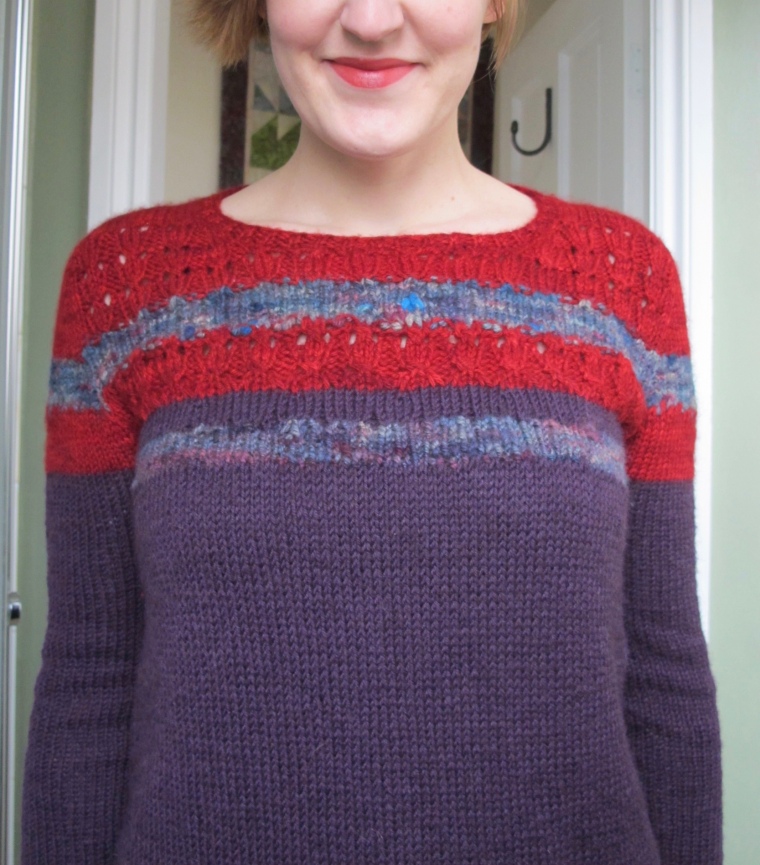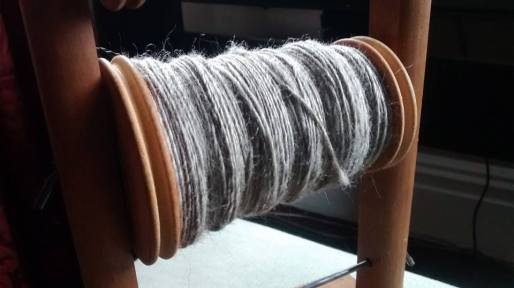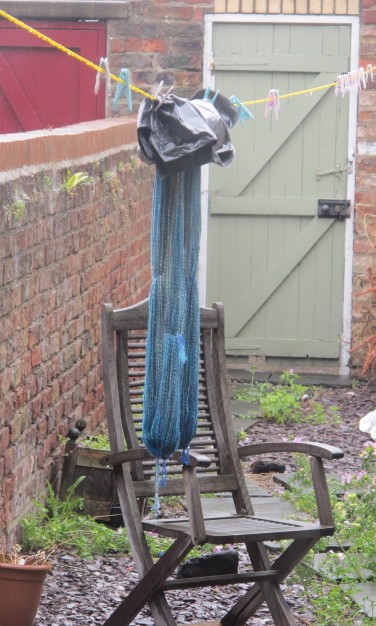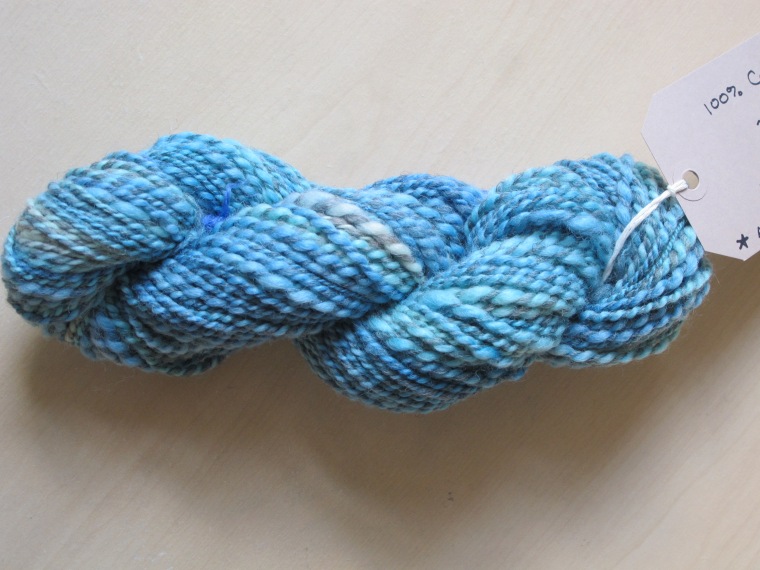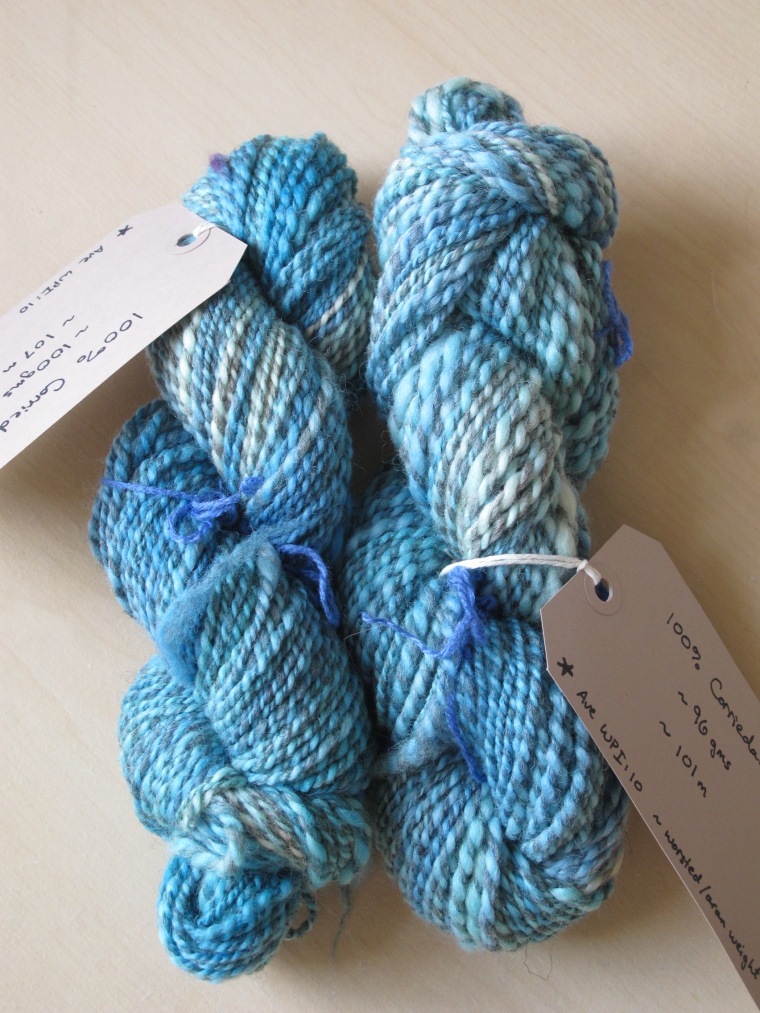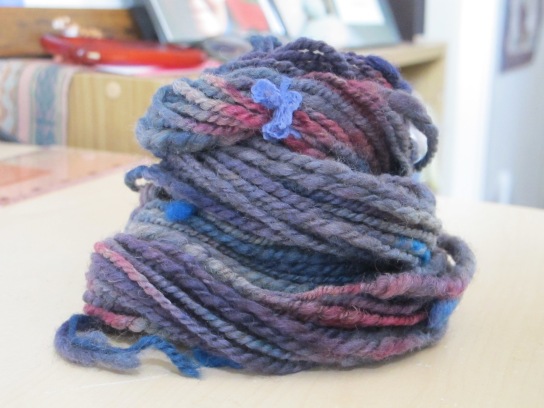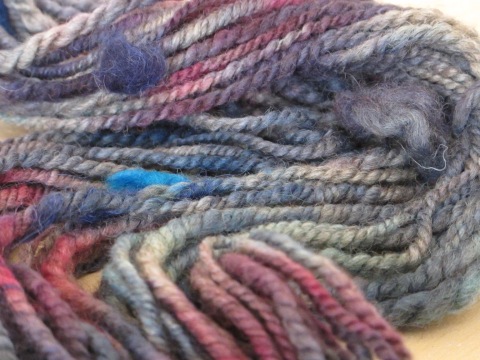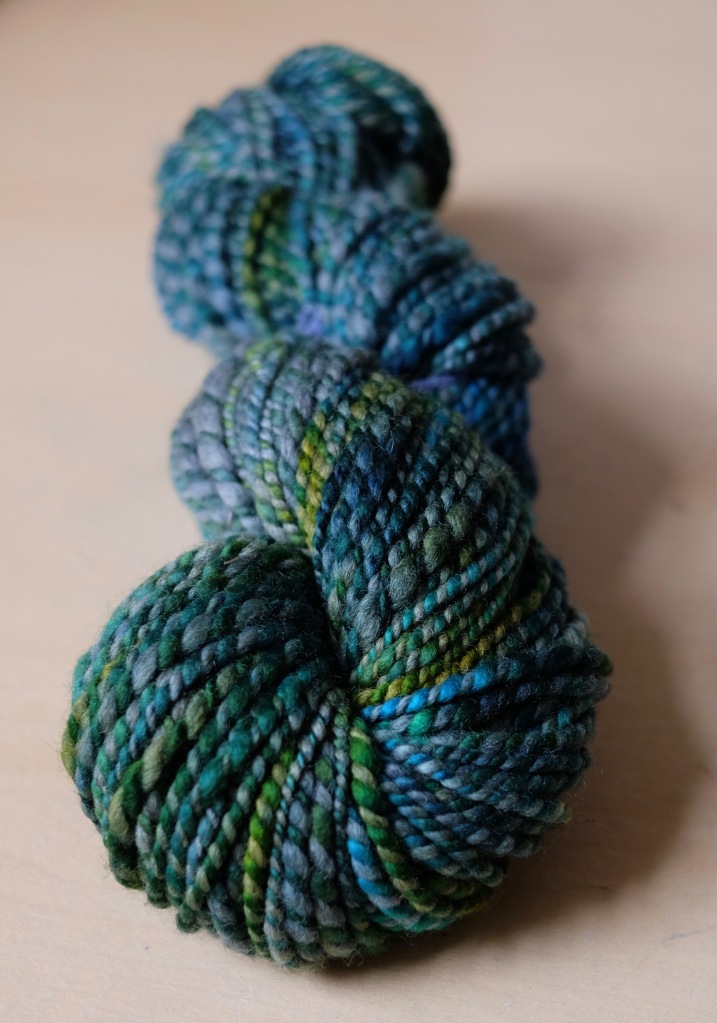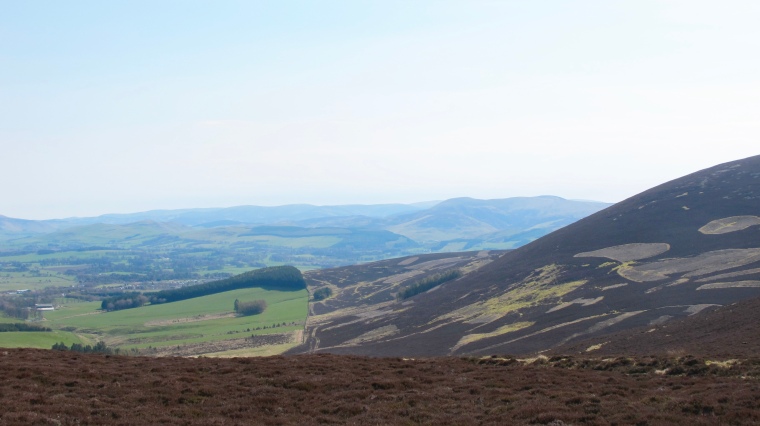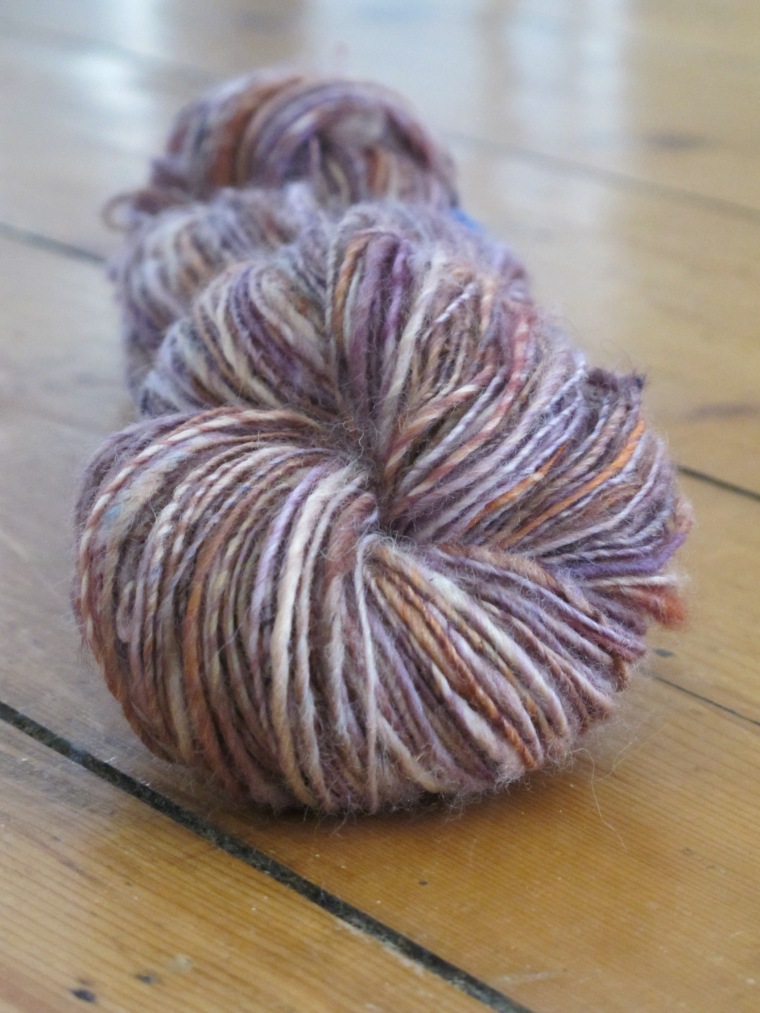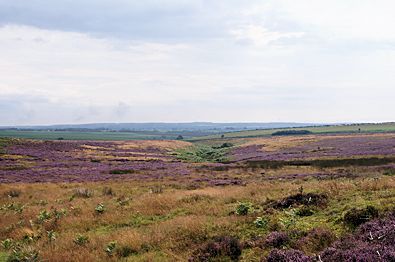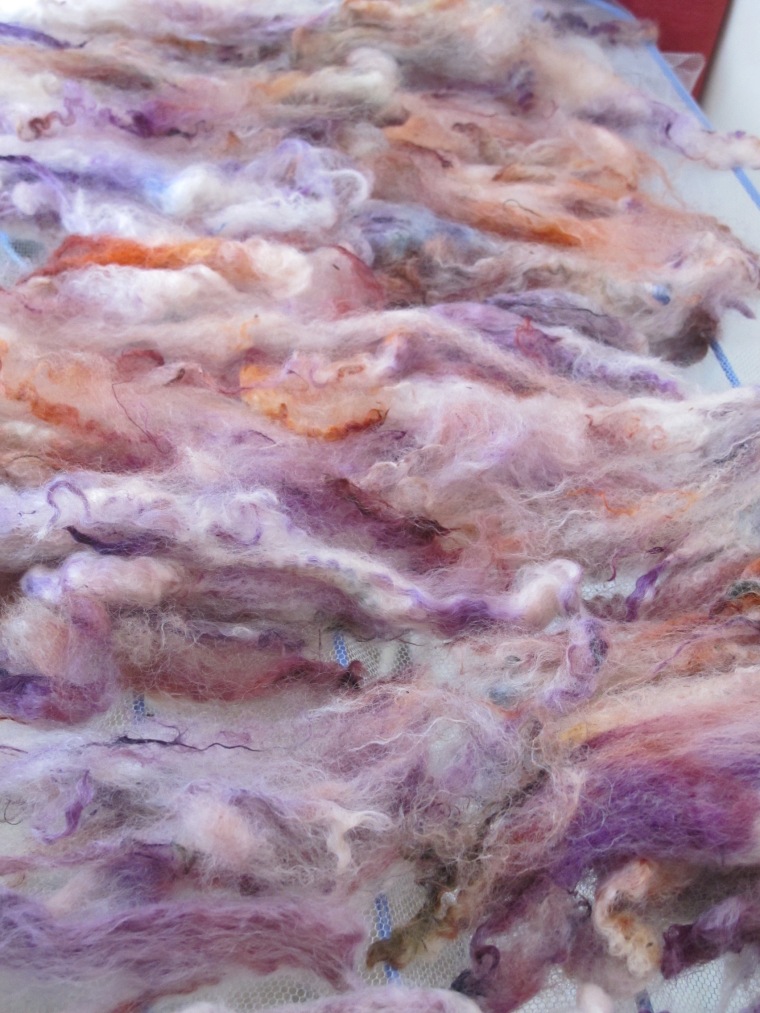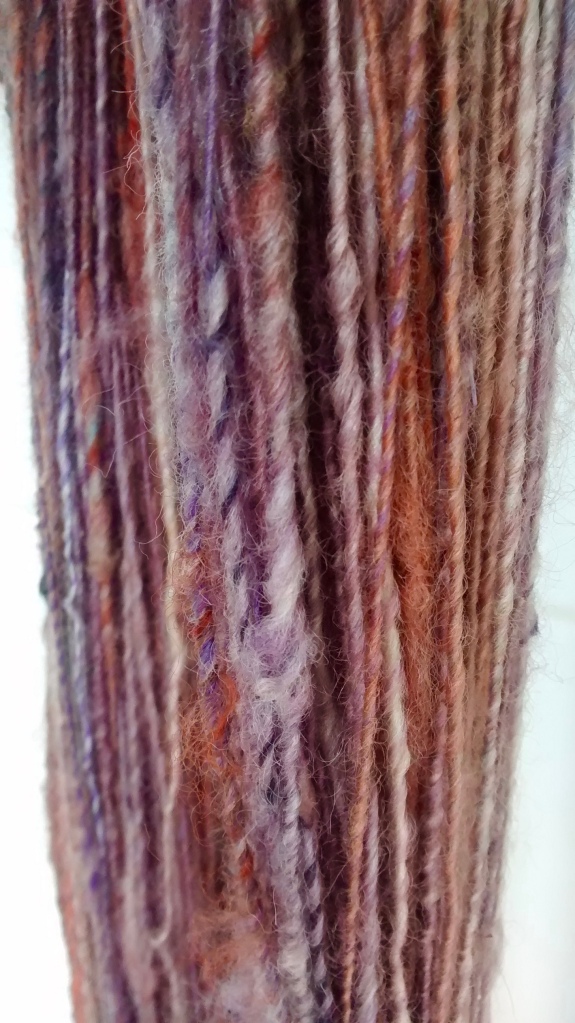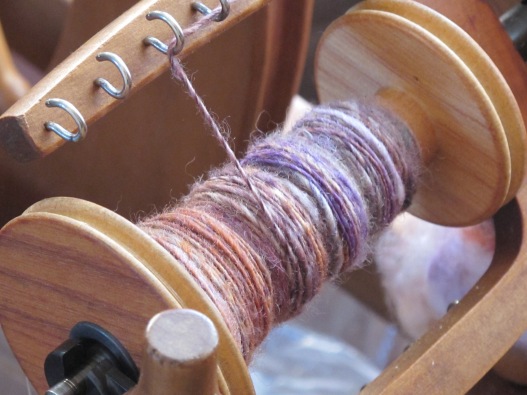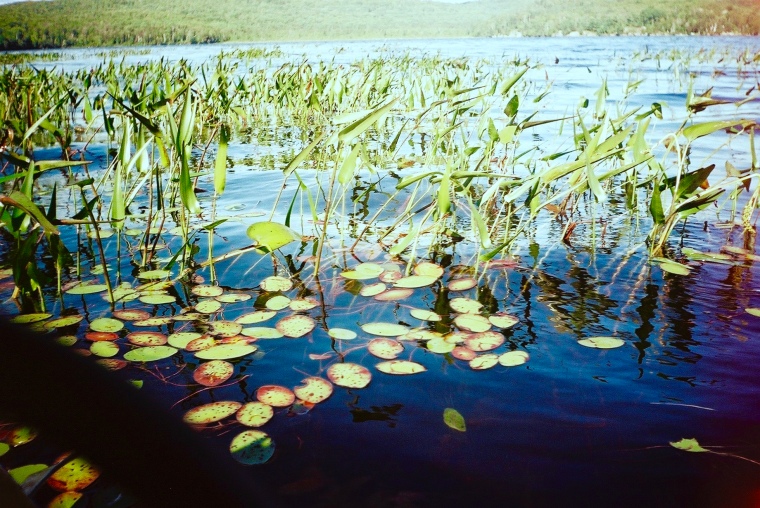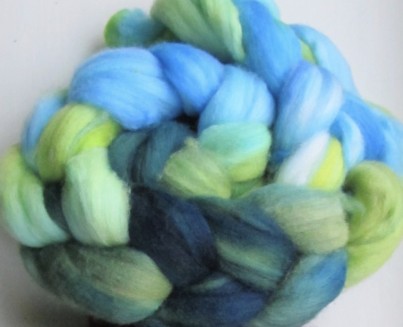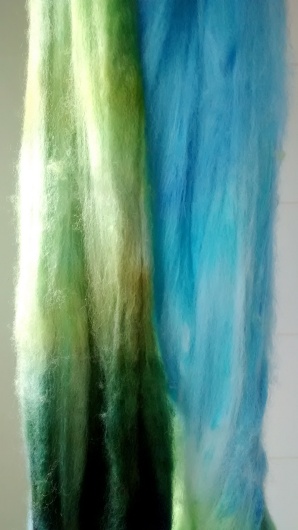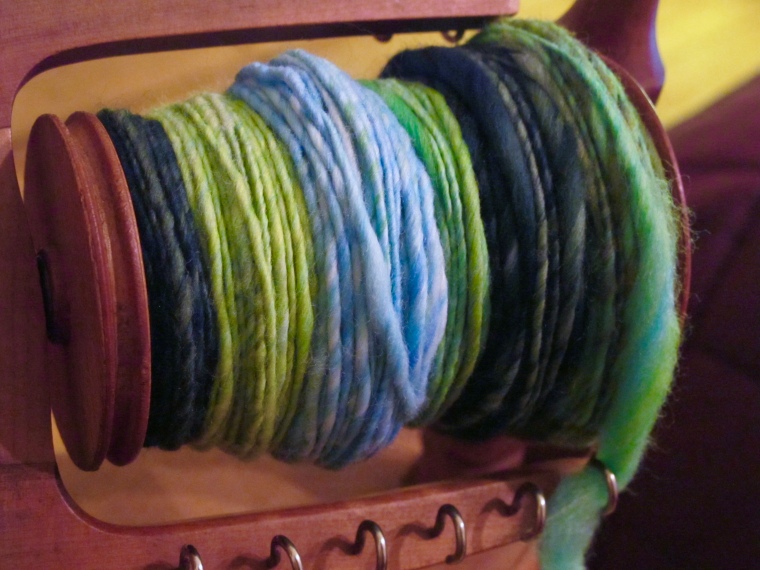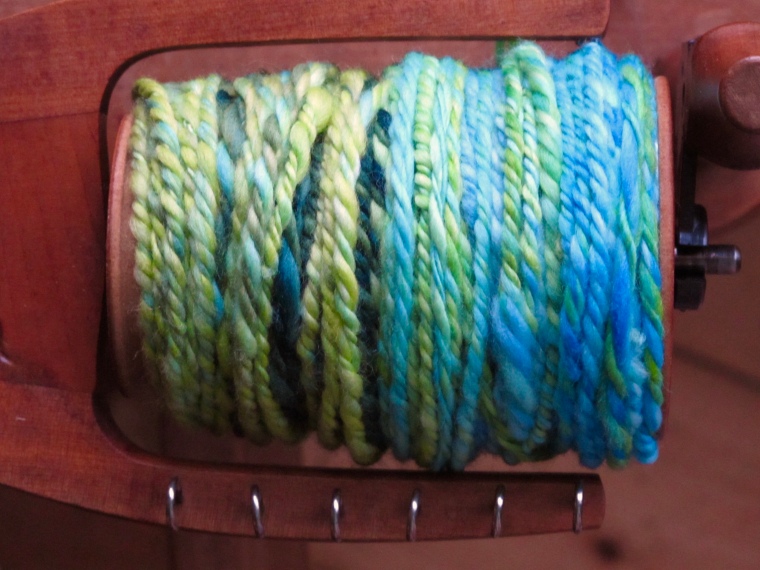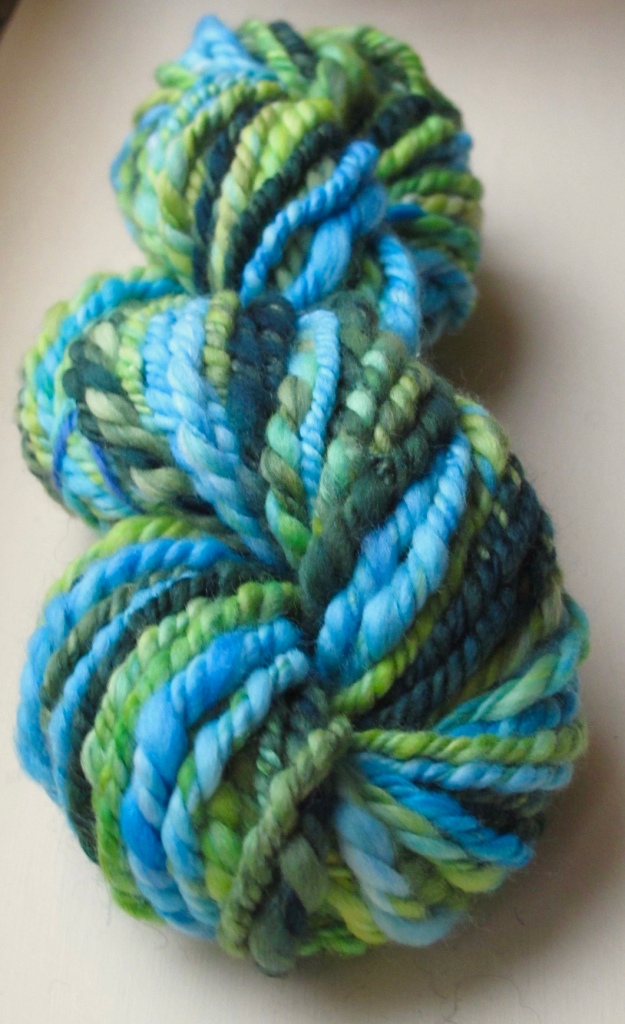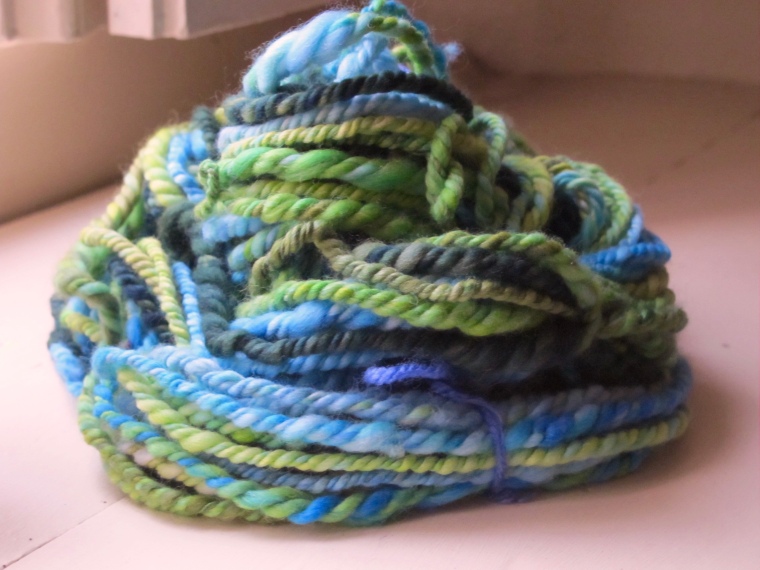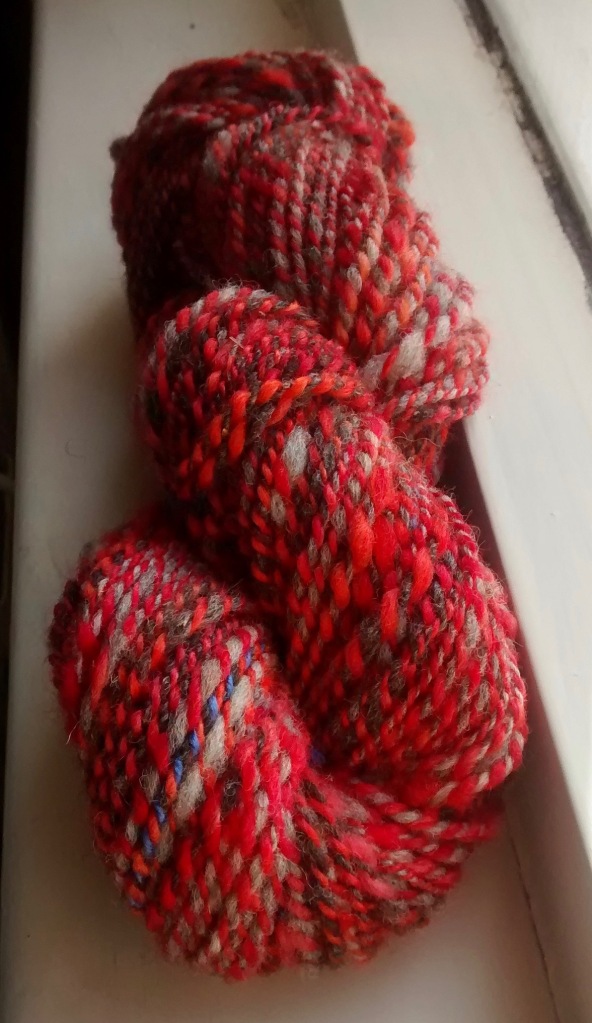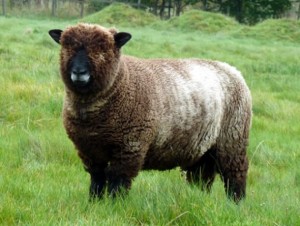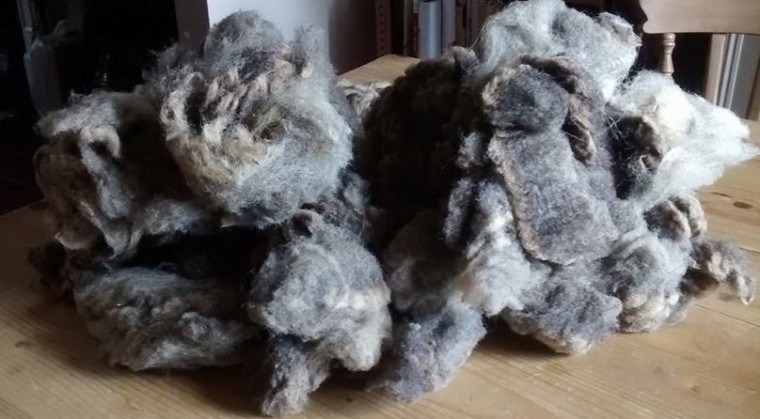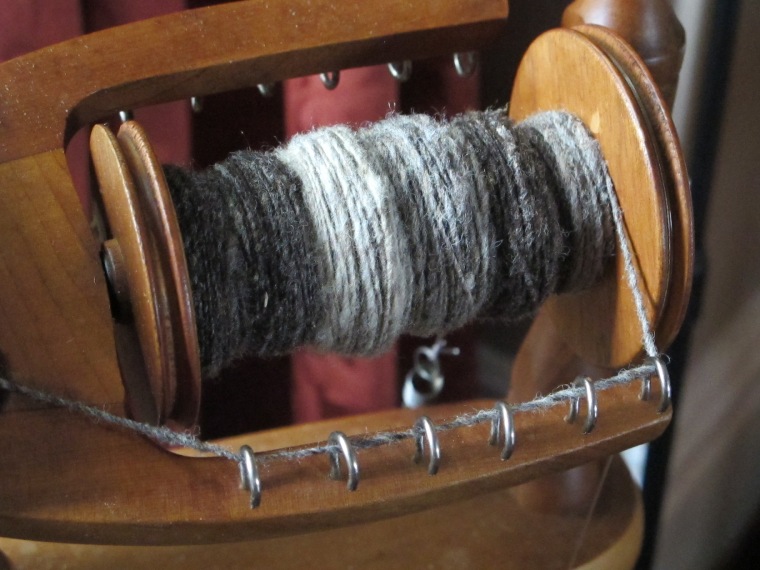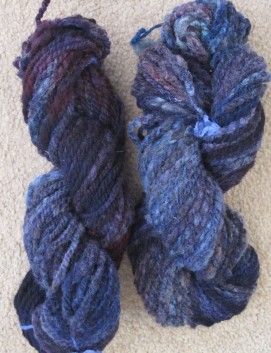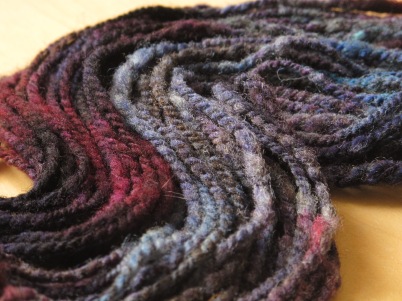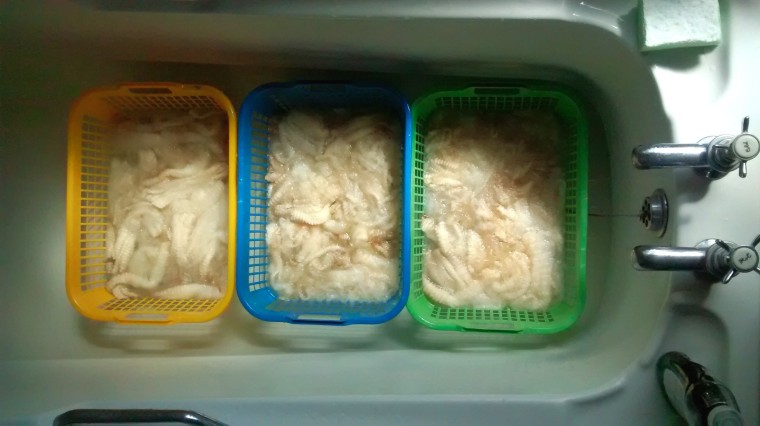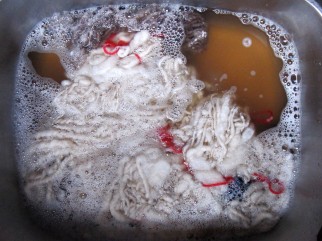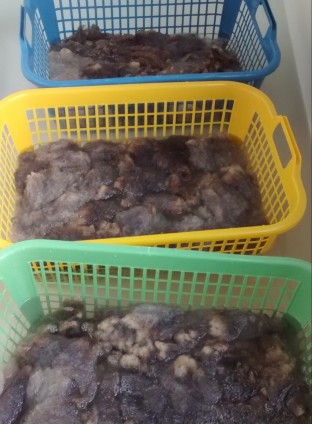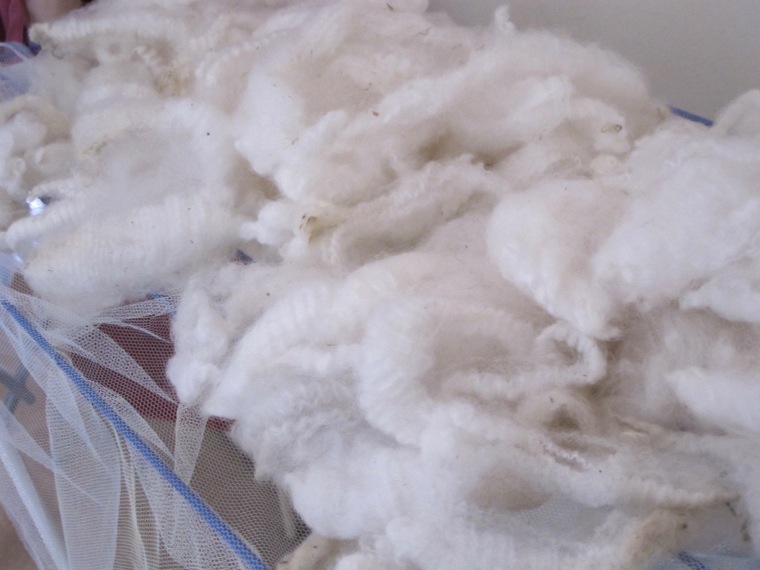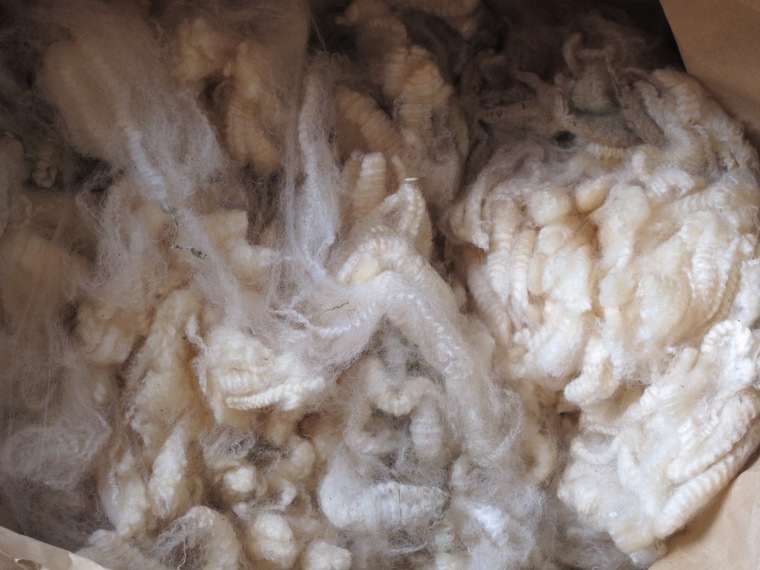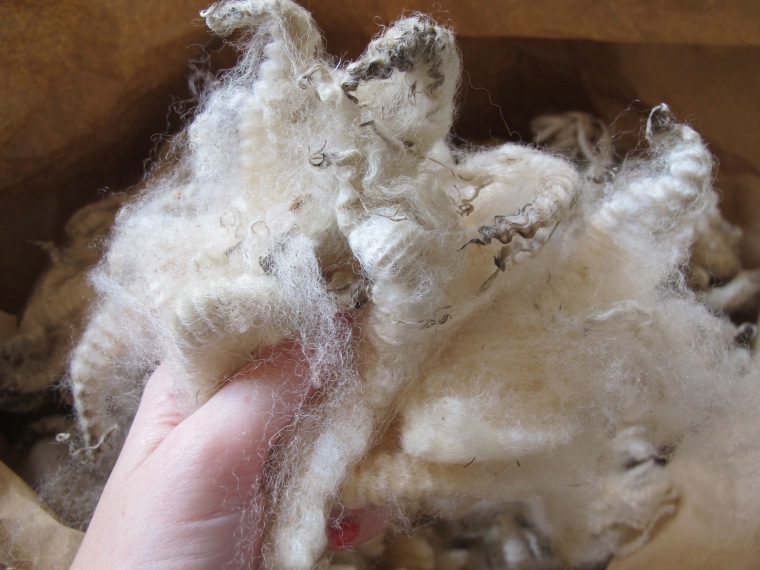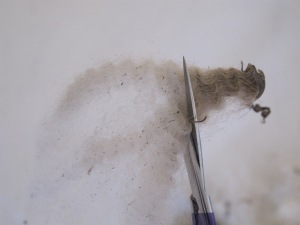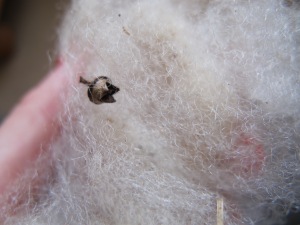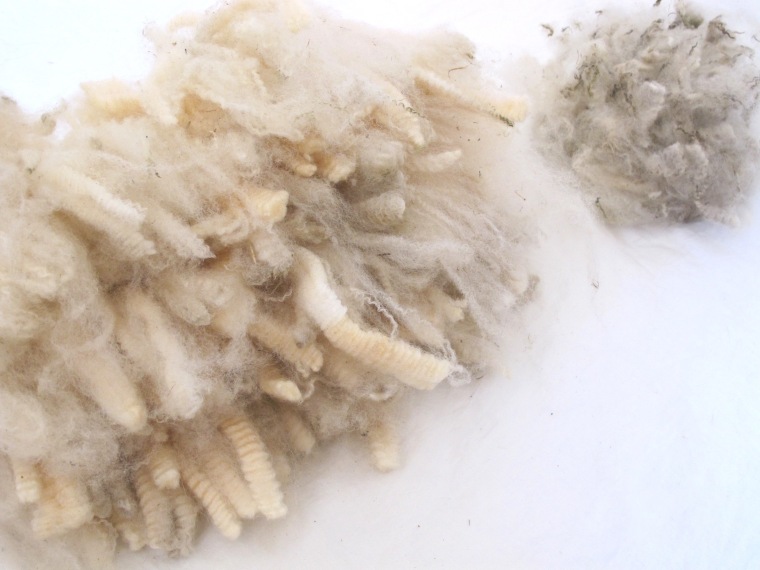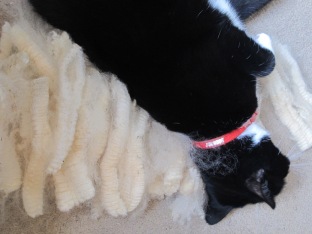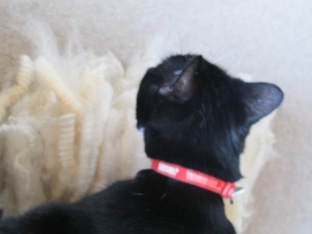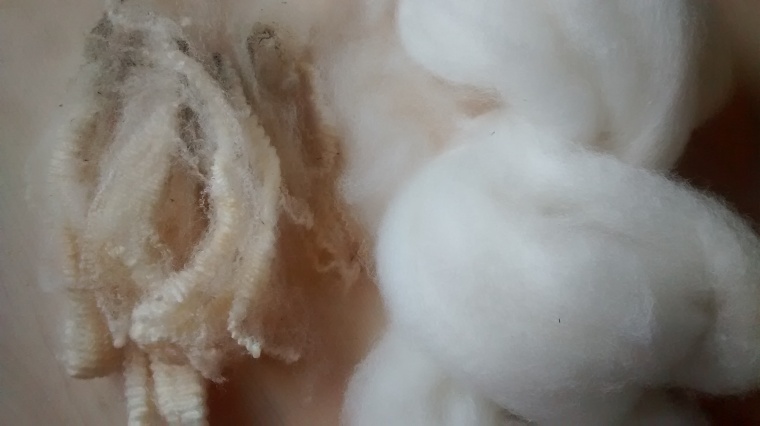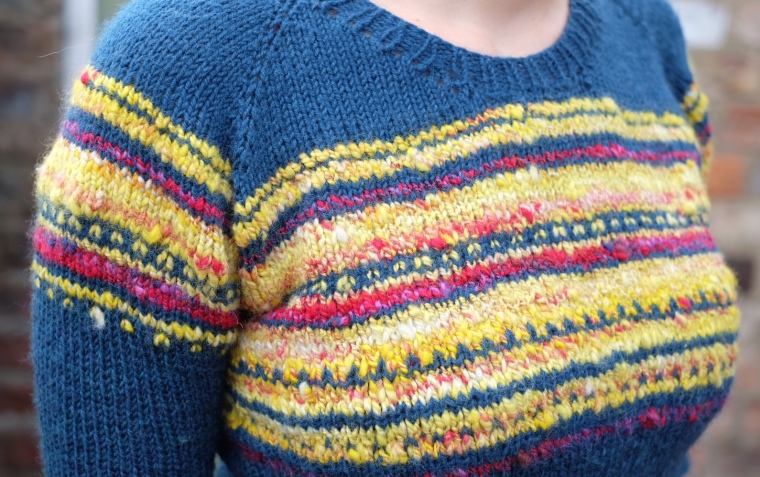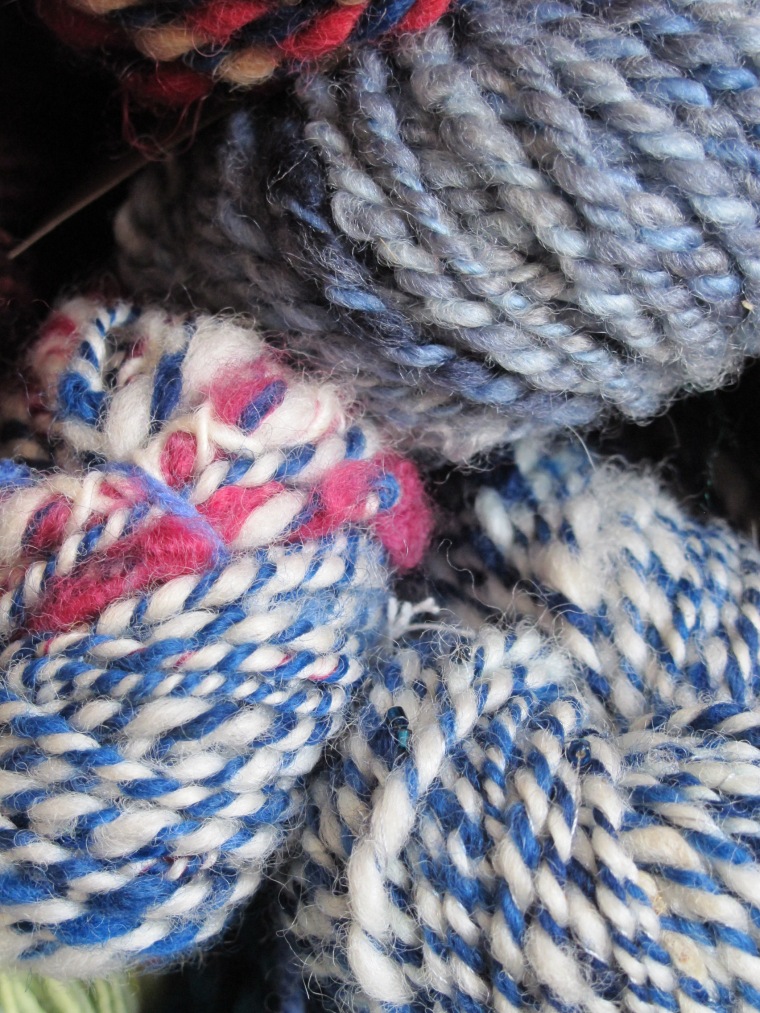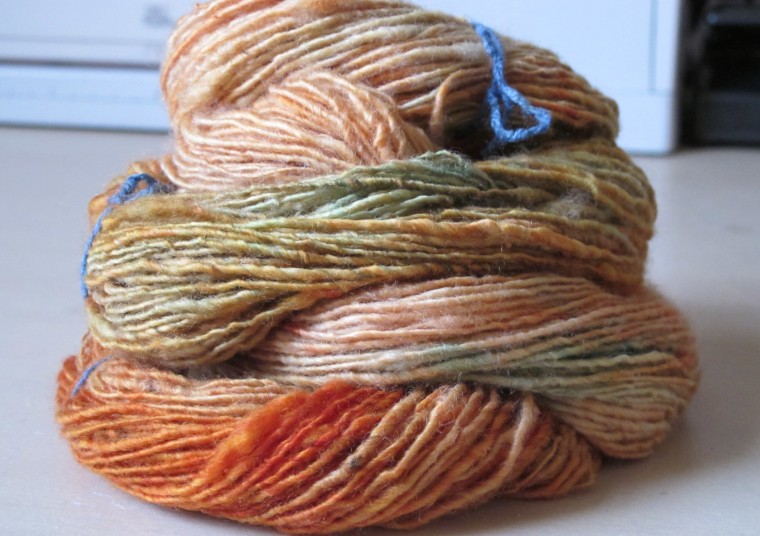I thought I should get around to sharing some pics of things that people have made with my yarn. I first got in to spinning because I wanted to make yarn for myself to knit with. But selling the occasional skein on Etsy means that I get to see my yarn in other people’s creations, which is a true pleasure. Anyone who has tried spinning will know the effort and care that goes into a single skein of yarn. I always feel attached to every thing that I make, and it’s exciting to see what people make with my little yarn babies once they have flown the proverbial nest! Looking through some of the things that others have made has turned into a nice little retrospective of some of my favourite spins over the last year and a half.
To start, let’s go back to ages ago with this skein, and this awesome hat:
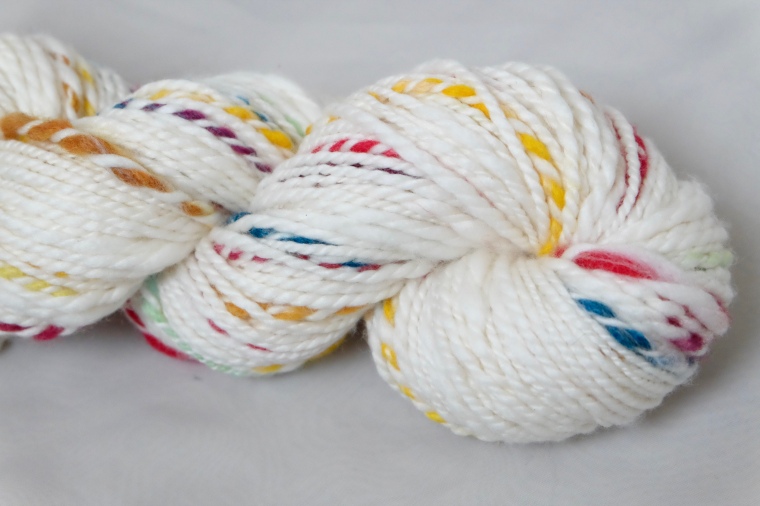
This skein was my first time spinning Falkland wool. I stumbled across it by accident while trying to be restrained in the pick and mix section of the World of Wool warehouse in Huddersfield. It’s an incredibly soft and silky wool with an almost pearly sheen. It’s also a good alternative to other imported merino, as it’s always non-mulesed and on the Falklands the sheep are farmed sustainably in terms of land usage and pesticide levels.
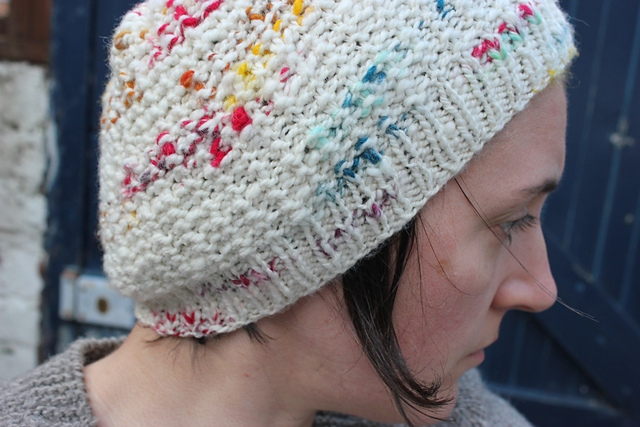
And above is the skein, come to life and on the head of the beautiful Sylvie from Phileas Yarns . It’s a lovely use of handspun texture and the yarn knitted up exactly the way I’d hoped it would.
Jumping ahead in time, this past summer, I vended at the Indie Burgh Yarn Crawl pop-up market in Edinburgh, where I sold tons of handspun and met lots of lovely yarn people, including Helen who was a tourist from Arizona. She bought this:
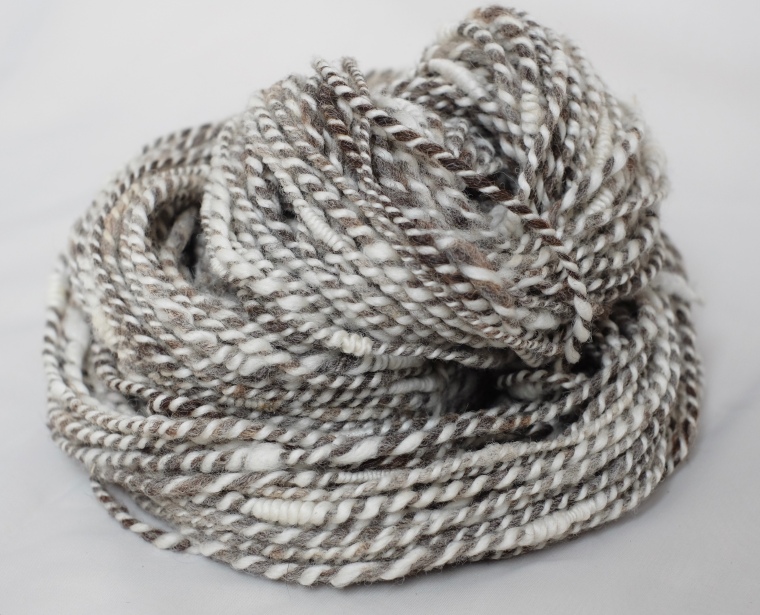
This skein was an early success with Ryeland wool spinning, which was a challenge for me when I started playing with different breeds wool. It is combined with the undyed fleece of Clive, the merino cross who has permeated much of my handspun collection. For more about Ryeland and processing Clive, check out these posts: A Weekend with the Oldest Sheep in England and Processing Raw Fleece: Intro, Processing Raw Fleece: Part 1, Processing Raw Fleece: Part 2
A month after the IBYC, Helen found me on Facebook and sent me this picture:
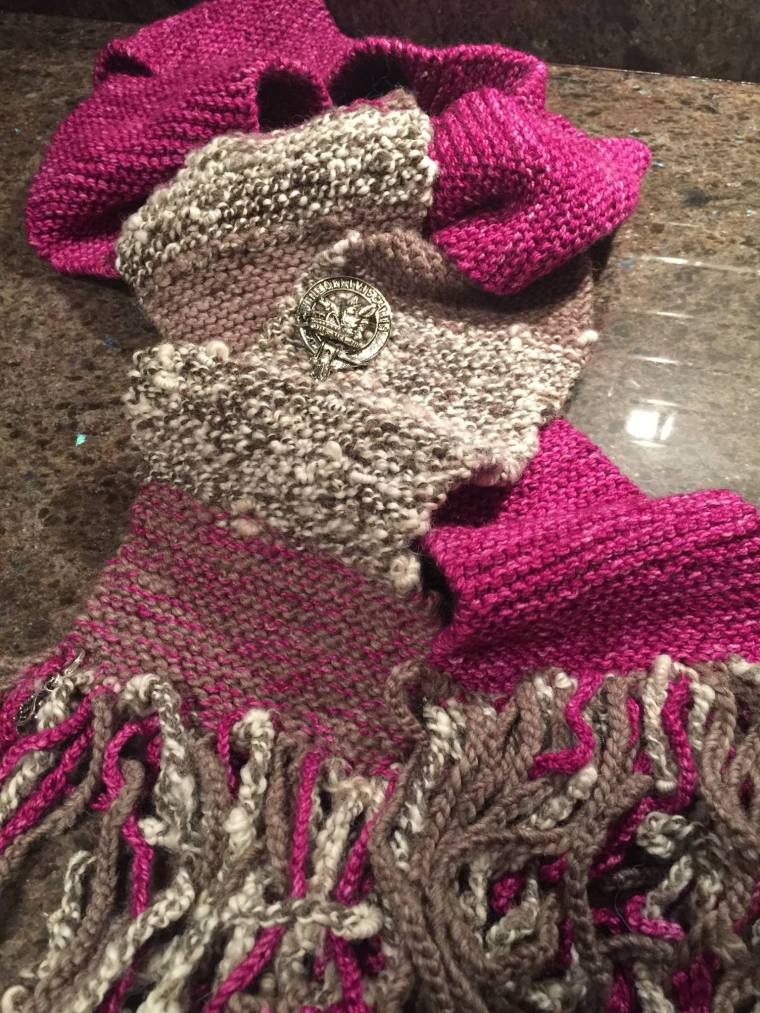
It’s combined with Ginger’s Hand-Dyed from the Ginger Twist Studio. I couldn’t find Helen on Ravelry or Instagram, and don’t want to credit her using her personal Facebook, so Helen, if you’re out there and see this, feel free to claim credit for your lovely work!
And speaking of Helens, there is this hat:
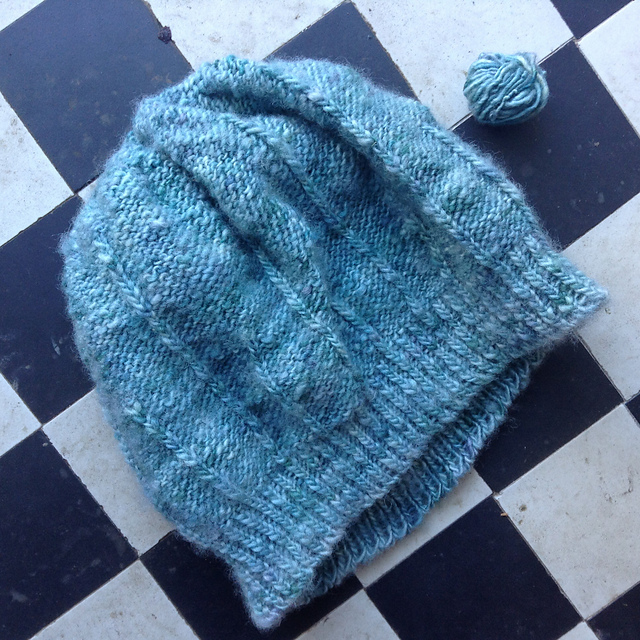
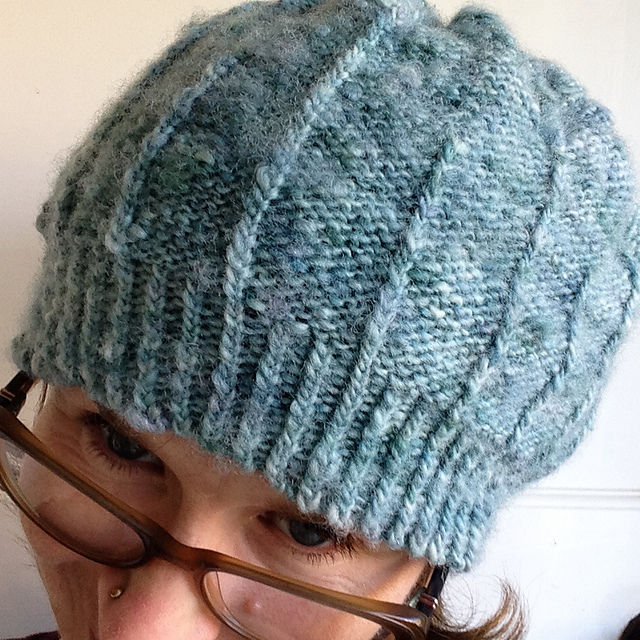
This Helen from my old knitting group in Yorkshire is prolific in churning out beautiful knitting projects. This hat was made from this skein:
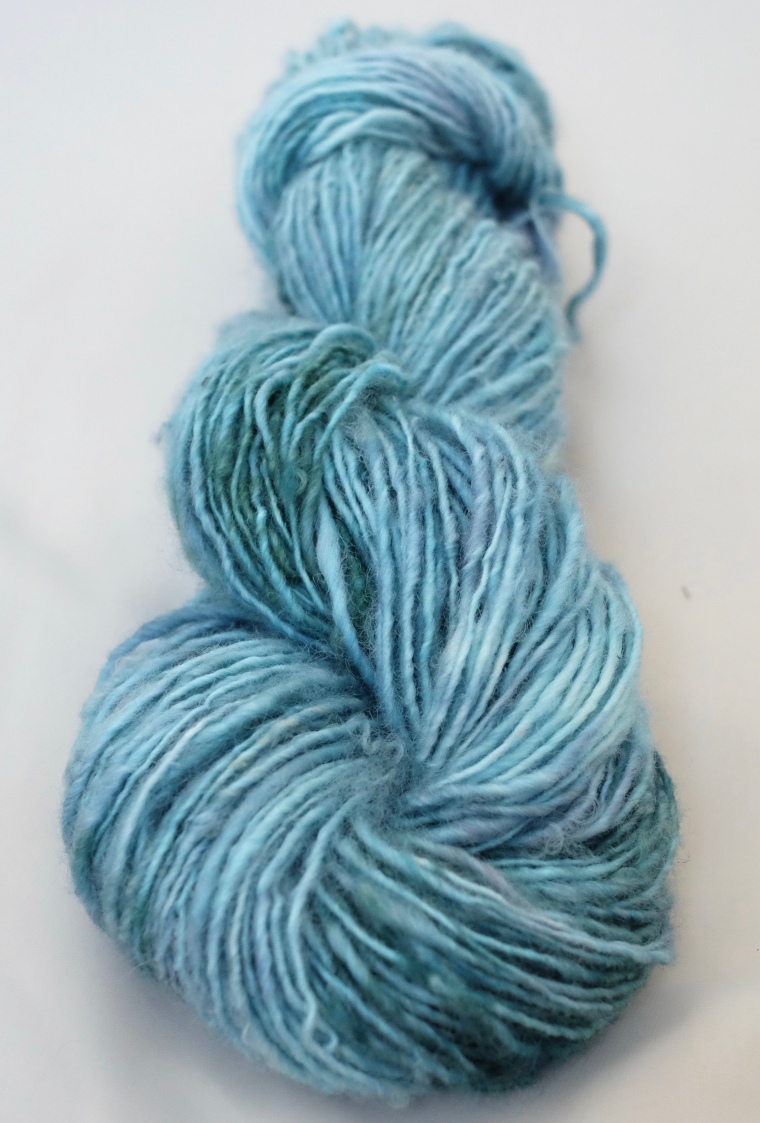
This yarn was an all-time favourite of mine. It was a spun-from-the-fold single from Clive’s merino fleece. I think it’s important to know where our fibre comes from, and skeins like this remind me of this. Spinning from the fold incorporates all the little slubs and felty bits that are natural to an outdoor animal’s life. Looking back through my photos, I found some pictures of this skein being spun.
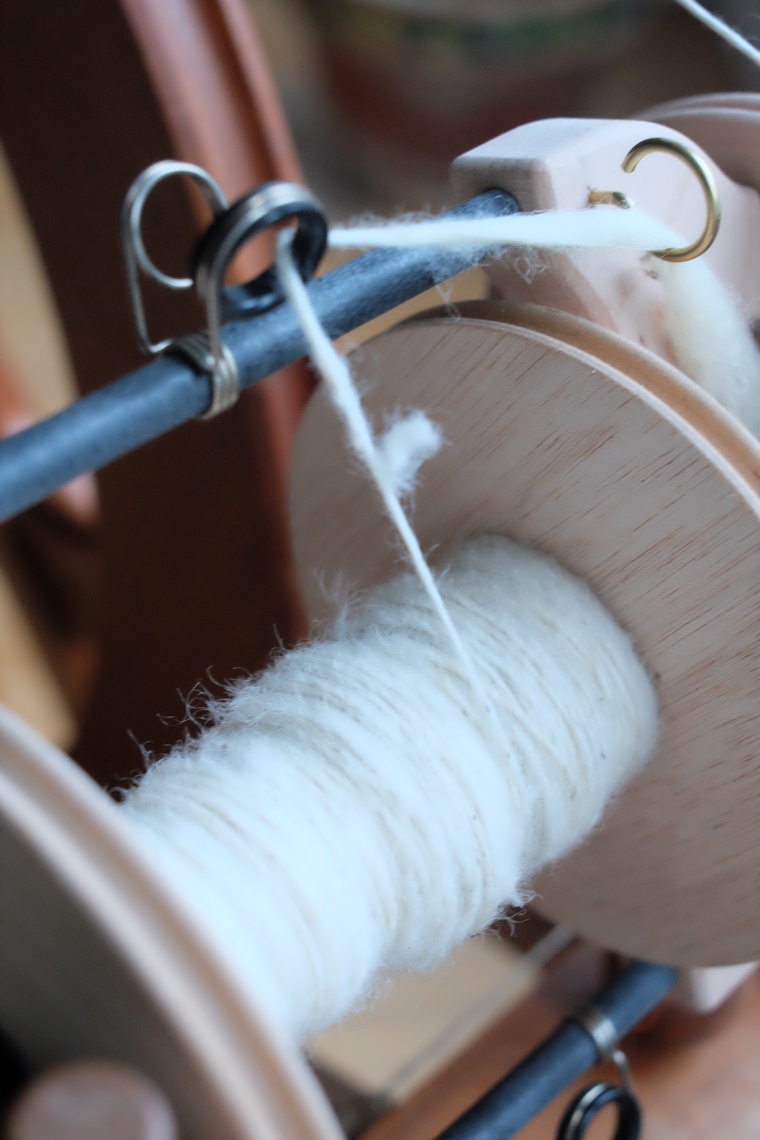
I spun a similar skein for myself and knit it into a shawl, which I’ve talked about it in a previous post.
I like to think that Clive, the happy, chubby sheep that I first met in a paddock in Australia is not contributing to hand-made hats and scarves in the UK and USA. It makes the specialness of a hand-made item seem just a bit more personal.
Having waxed poetic about this sheep, I realise that I have absolutely no photos of him. So I’ll close this post with this photo:
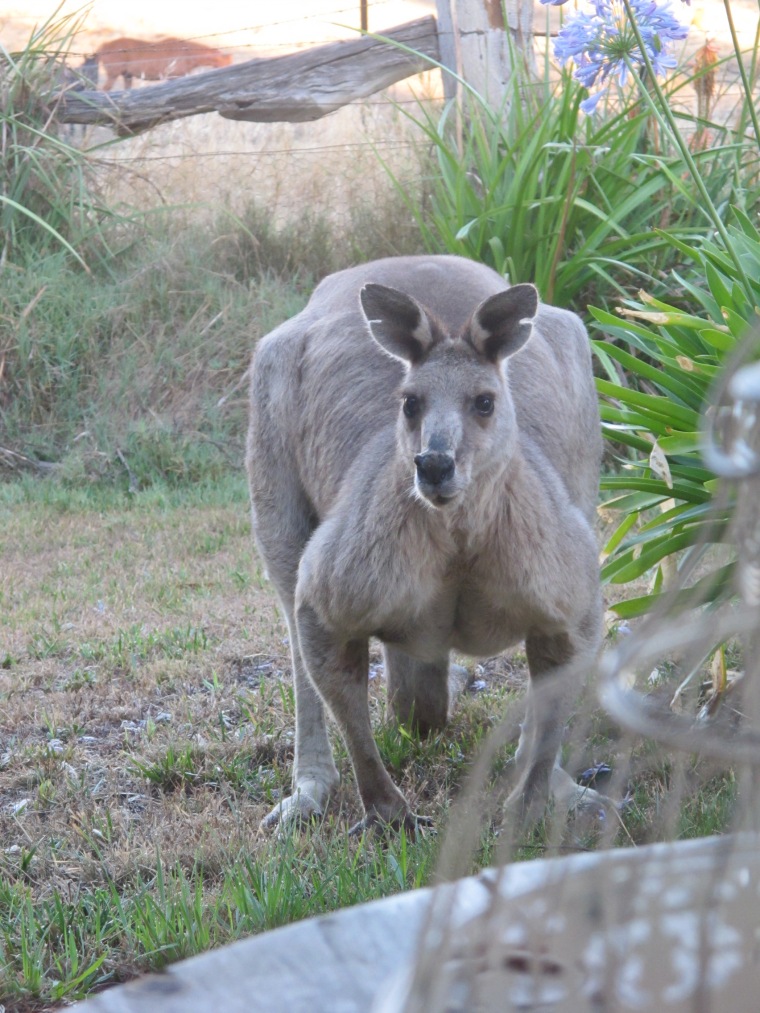
This is a really big kangaroo who sometimes hangs out in the same paddock. I have a million photos of him







